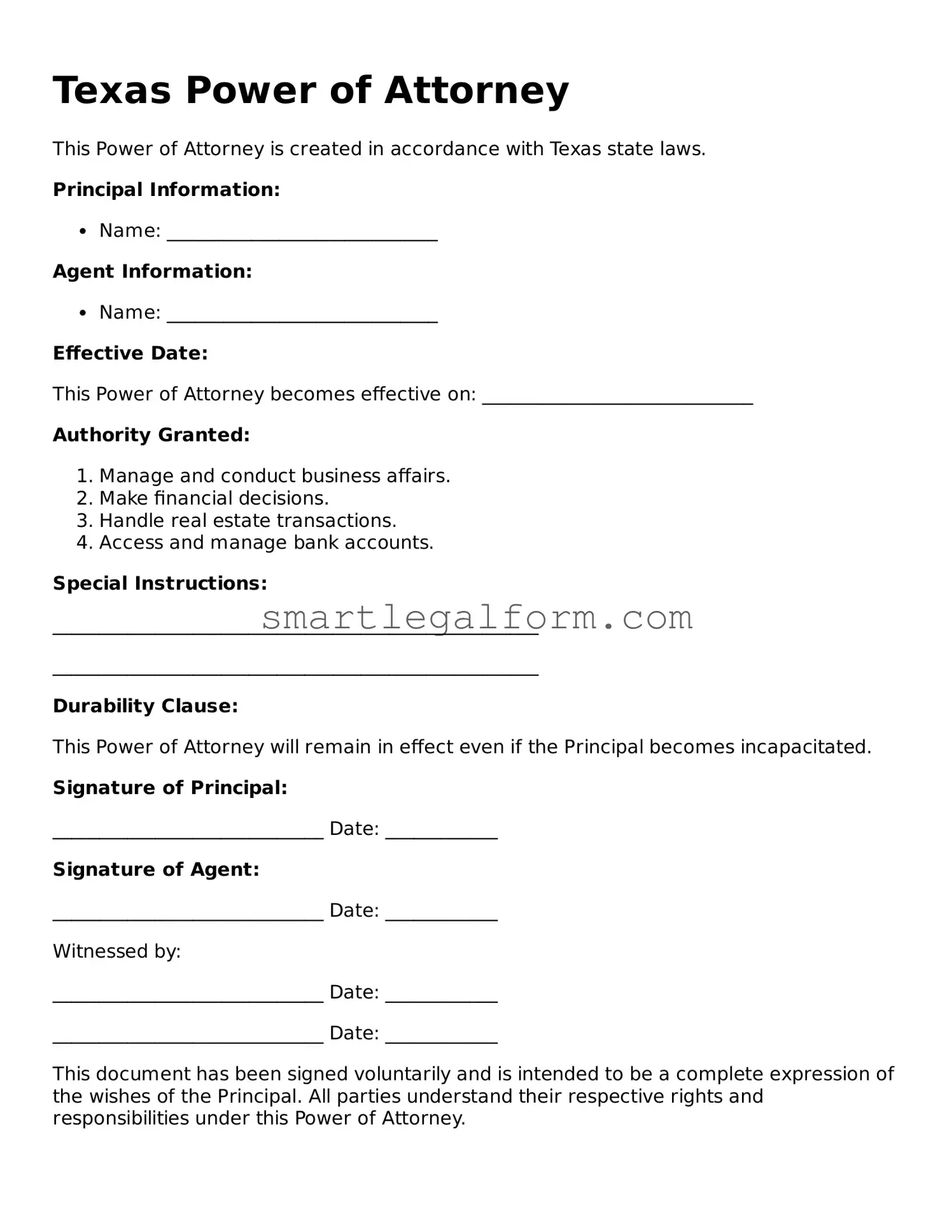Texas Power of Attorney
This Power of Attorney is created in accordance with Texas state laws.
Principal Information:
- Name: _____________________________
Agent Information:
- Name: _____________________________
Effective Date:
This Power of Attorney becomes effective on: _____________________________
Authority Granted:
- Manage and conduct business affairs.
- Make financial decisions.
- Handle real estate transactions.
- Access and manage bank accounts.
Special Instructions:
____________________________________________________
____________________________________________________
Durability Clause:
This Power of Attorney will remain in effect even if the Principal becomes incapacitated.
Signature of Principal:
_____________________________ Date: ____________
Signature of Agent:
_____________________________ Date: ____________
Witnessed by:
_____________________________ Date: ____________
_____________________________ Date: ____________
This document has been signed voluntarily and is intended to be a complete expression of the wishes of the Principal. All parties understand their respective rights and responsibilities under this Power of Attorney.
